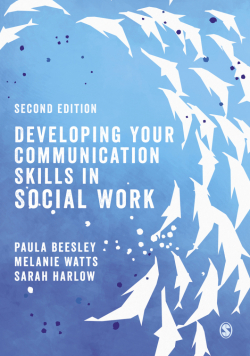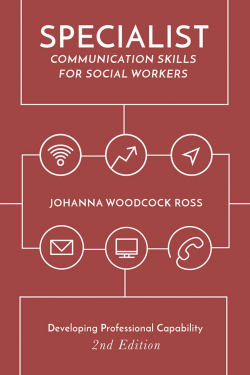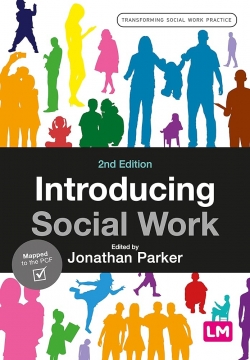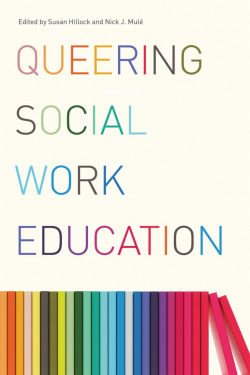Developing your communication skills in social work

Buy online ($)
Type
Book
ISBN 13
9781529752786
LCCN
2023931331
Category
Reference
[ Browse Items ]
Publication Year
2024
Publisher
SAGE, United States
Pages
vii, 203 p. : ill.
Subject
1. Social Science. 2. Social Work.
Tags
Abstract
This book explores:
· What is meant by communication skills
· What communication skills are
· What they look like in practice
· The differences in communicating with service users and professionals, such as children, guardians, peers and emergency workers
· Why they are important
It includes a wide range of theories, multiple case studies, reflective tasks, and exercises. It will develop your critical thinking and reflection skills, and help you develop your own communication style.
Presented in a chronological style which acts as a working tool that you can dip into and out of. Each chapter is structured in a way that encourages you to build on your knowledge, so it begins by taking you right back to basics to learn core theory and practice techniques before getting you to critically reflect on the use of different skills in different settings and with different service user groups. The end-of-chapter skills audits help you to reflect on what you have learnt, what your strengths are and what you need to work on more.
· What is meant by communication skills
· What communication skills are
· What they look like in practice
· The differences in communicating with service users and professionals, such as children, guardians, peers and emergency workers
· Why they are important
It includes a wide range of theories, multiple case studies, reflective tasks, and exercises. It will develop your critical thinking and reflection skills, and help you develop your own communication style.
Presented in a chronological style which acts as a working tool that you can dip into and out of. Each chapter is structured in a way that encourages you to build on your knowledge, so it begins by taking you right back to basics to learn core theory and practice techniques before getting you to critically reflect on the use of different skills in different settings and with different service user groups. The end-of-chapter skills audits help you to reflect on what you have learnt, what your strengths are and what you need to work on more.
Description
Chapter 1: Reflection and Emotional Intelligence
Chapter 2: Initial Engagement
Chapter 3: Listening
Chapter 4: Clarification
Chapter 5: Empathy
Chapter 6: Challenging: Holding Sensitive Conversations
Chapter 7: Working with Resistance
Chapter 8: Barriers to Effective Communication
Chapter 9: Remote Communication
Chapter 10: Case Recording and Assessments
Chapter 11: Inter-Professional Communication
Chapter 12: Managing Endings
Chapter 2: Initial Engagement
Chapter 3: Listening
Chapter 4: Clarification
Chapter 5: Empathy
Chapter 6: Challenging: Holding Sensitive Conversations
Chapter 7: Working with Resistance
Chapter 8: Barriers to Effective Communication
Chapter 9: Remote Communication
Chapter 10: Case Recording and Assessments
Chapter 11: Inter-Professional Communication
Chapter 12: Managing Endings
Biblio Notes
Note: Include references and index.
Number of Copies
1
| Library | Accession No | Call No | Copy No | Edition | Location | Availability |
|---|---|---|---|---|---|---|
| Main | 1245 | 1 | Second Edition | Technical Section | No |




